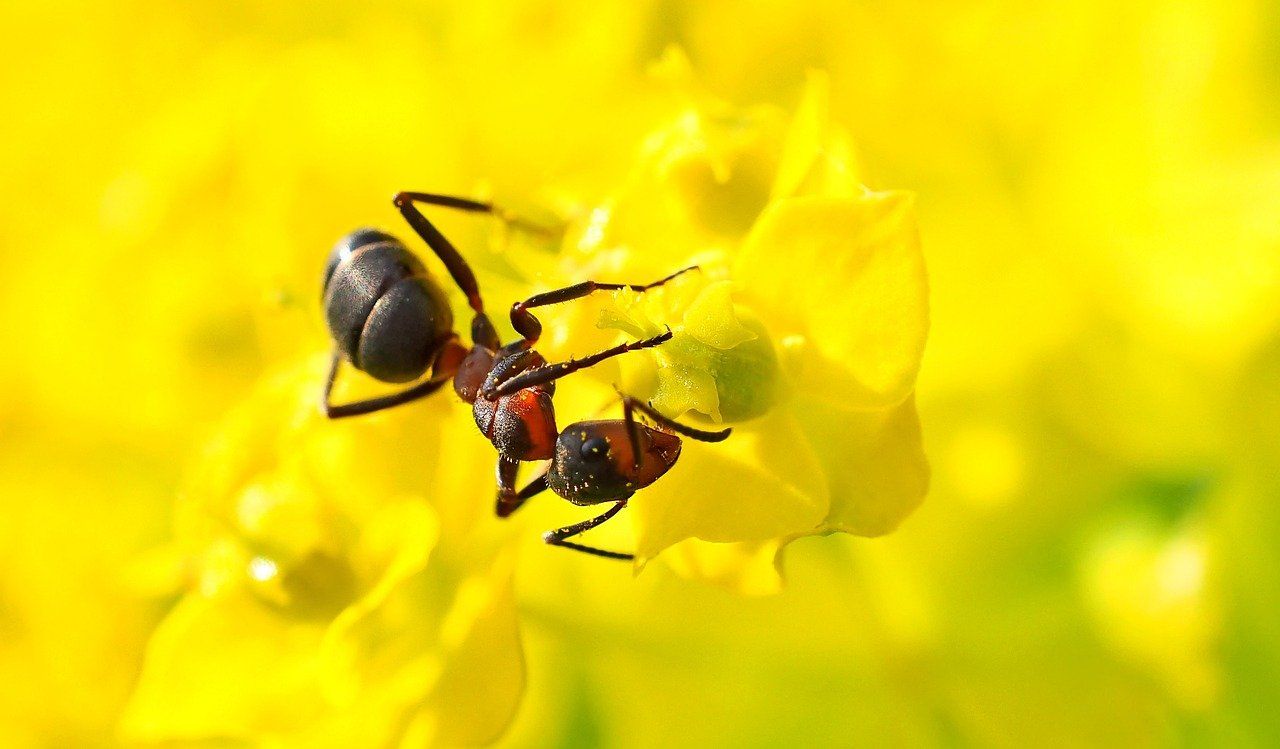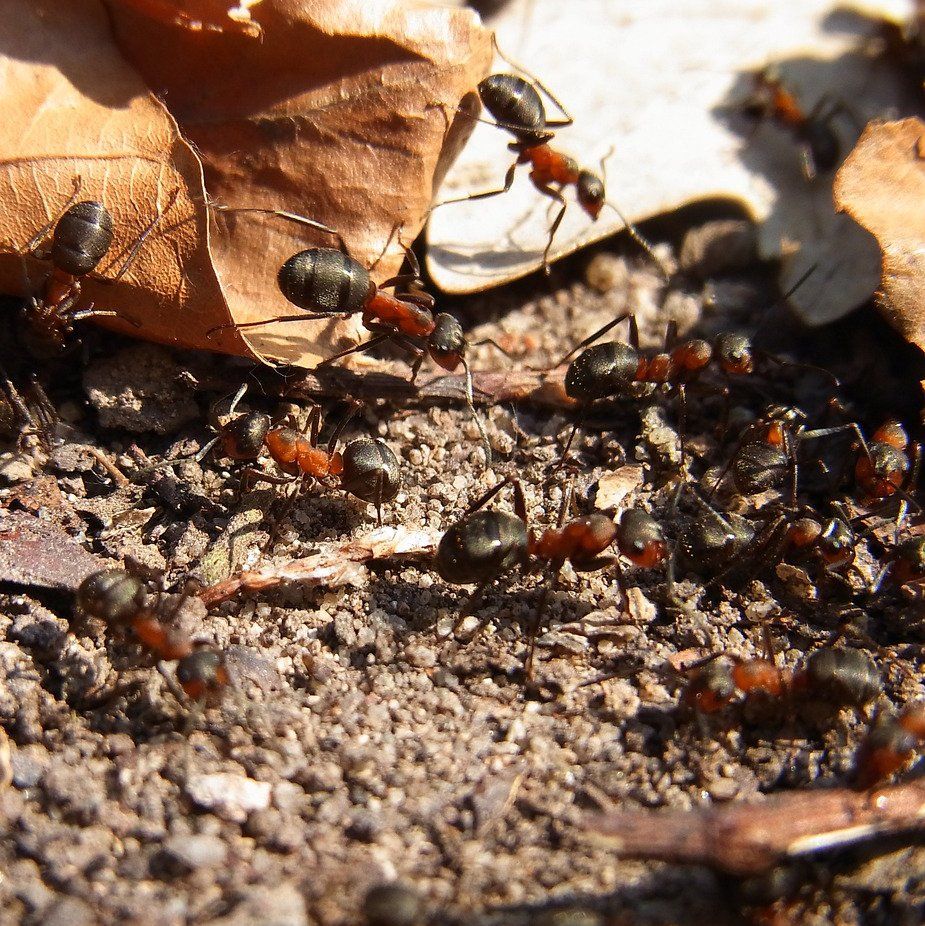Wood Ants (Formica Rufa)

In the NWS Newsletter, Summer 1998 (available in Billericay Library), Luke Bennett wrote a summary of just a small amount of this work, a copy of which is shown below:-
Formica rufa, the largest British ant, belongs to the family Formicidae. It is found on heaths in both deciduous and pine woodlands, where it builds nest of twigs, leaves and pine needles. The nests often reach two metres across and one metre in depth, and at the height of the season may contain up to 300,000 individuals. The ants occupy galleries in both the mound and the soil beneath. They are most active on warm, dull, humid days, although they forage both day and night. The foragers are the worker ants, which are non-breeding females whose function is to collect food, to build, clean and repair the nest, and to defend the nest against predators and rival ants.
In the nest the queen lays eggs throughout the summer, so at any one time there are larvae at all stages of development. Battles occur between ants from different colonies to establish territories. These territories range from about 270 to more than 1600 square metres, each one consists of a network of permanent foraging trails formed around the nest and kept clear of obstructions so that the nest material and food can be brought to the colony.
The ants feed mainly on aphids, flies, caterpillars and honeydew. Honeydew which is ‘farmed’ from specially attended aphids, forms about 60% of their diet, another 30% comes from plant sap and resin from trees, 5% comes from fungi, and the rest is made up from carrion and seeds. The worker ants bring the food to the nest, and regurgitate it for the other ants. Much of the foraging takes place among the branches of tall trees, and the Oak is by far their favourite foraging tree – so much so that ants from one nest were found to be walking straight past a Sweet Chestnut and on for another 30 metres to forage on an Oak.

In addition to foraging over great distances from the nest, workers put considerable effort into keeping the nest at the correct temperature. If the mound is in danger of becoming too cool, they ‘sunbathe’ on top and the go down inside to release the heat stored in their bodies; if too warm, there are many vents on the surface which are opened to allow cool air in. When the nest is disturbed, the workers swarm out to meet the intruder, biting with their strong mouth-parts and rearing up to spray formic acid from their rears. Through incredible aggression and sheer numbers they are formidable opponents for most other inhabitants of the Wood.
The nests which you can see in Norsey Wood are often south facing. The protective ‘thatch’ is constructed so that each item is angled to catch the sun’s rays and shed rain. The size of nest visible above ground is usually mirrored underground – amazing engineering !
If you would like to know more, you can refer to copies of the reports produced by Deborah and Gill, and held at the Information Centre. Deborah’s thesis is reproduced in full in the Bulletin of the Amateur Entomologist’s Society, Vol 56, No. 414.
As the days warm up in Spring, wood ants emerge after winter hibernation in their thousands and are quite a sight to see. This video is of Norsey wood ants emerging in Spring 2023 in just one nest.
